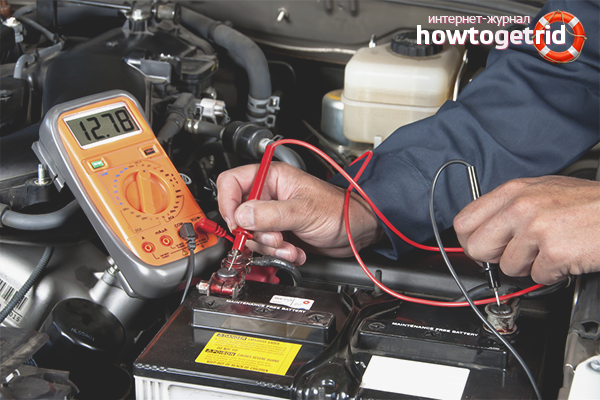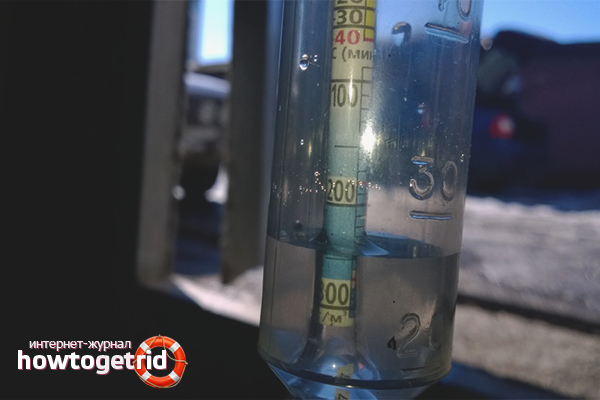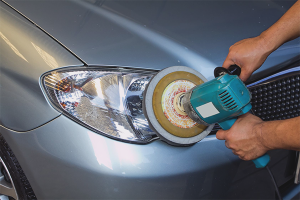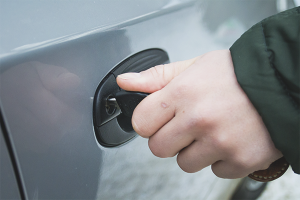The content of the article
Every car owner sooner or later has problems with the battery. After a short battery life, the battery stops functioning properly. The cause may be factory defects or improper battery operation. In any case, you need to check the battery for performance.
Using a few simple methods, you can determine the condition of the battery and understand how long it will last. But before checking it, read the signs of malfunctions and the reasons that lead to a decrease in battery performance.
Battery Symptoms
There are two of the most striking signs of a dead battery. If you observe at least one of them, do not ignore, but try to find out the causes of the problem first. With a decrease in functionality, the following features in the battery operation are observed:
- The starter starts the engine listlessly. This may be a sign of a dead battery. Due to the low charge, the engine scrolls with difficulty and a weak spark is not enough to set the fuel mixture on fire.
- The battery started to run out quickly. This is especially noticeable in the winter, when the charge lasts for only a few engine starts. The cause of rapid battery energy loss may be low electrolyte levels.
Reasons for decreasing battery performance
- Bad charge. The generator produces a weak current and cannot fully charge the battery. To resolve this problem, you must contact technical service.
- Electrical equipment. Incorrect connection of car electrical appliances makes the battery more difficult and shortens its service life.
- Poor wiring. Cars eventually have problems with wiring. In some places, the wires are rubbed or rot, which leads to a short circuit and low battery.
- Long exploitation. Each device has its own life, batteries are no exception. After the guaranteed period of operation in the battery, chemical and physical processes begin: oxidation, sulfation, damage.
- Bad battery maintenance. The lack of periodic monitoring and cleaning of the battery leads to its breakdown or shortening of the working life. With proper and high-quality care, the battery will last longer without breakdowns.
- Inattention. After leaving the car, drivers often leave electrical devices in working condition, such as light bulbs, indicators or a radio tape recorder. In the cold season, unplugged appliances quickly drain the battery.
Multimeter voltage test
A well-charged battery produces a voltage that matches the documents on it. In most cases, the numbers range from 12.5 to 12.8 volts, when fully charged.
Some manufacturers claim that the voltage in their batteries is higher than 13 V. If you take a measurement immediately after charging the battery, then the numbers can be equal to or exceed 13 volts, but this data is false.
After a full charge, the voltage in the battery exceeds the norm. This is due to the properties of the electrolyte. To obtain accurate data, measure 2 hours after the battery is fully charged.
Instruction:
- Turn the multimeter into DC mode.
- Insert the red probe into the socket for measuring current in the range from 10A to 20A.
- Touch the test leads to the battery terminals.
- The contact time of the multimeter with the battery should not exceed 2 seconds, otherwise the battery can be damaged.
- Check the readings with the data indicated in the battery documents.
Battery test under load
After measuring the voltage with a multimeter for complete diagnostics, you need to check the battery operation under load. Measurement is carried out by a special device (load plug). This device consists of a voltmeter connected to it, a load spiral and a clamp.
Instruction manual
Connect the clamp to the negative of the battery, and with the plug, touch the positive terminal. Hold the device in this position for five seconds, and remember the last result on the voltmeter scale. If the voltage is 9 volts, then the battery is working - it can be used.
Checking Electrolyte Levels
For proper battery operation, a certain amount of liquid must be present in it. On some battery models there are marks through which you can see the electrolyte level: upper (maximum volume), and lower (minimum volume). If there are no such marks, unscrew the filler plugs and see the level through them.
Instruction manual
- The normal level is when the electrolyte covers the plates by about 15 mm. For accuracy, you can use a tube with a diameter of 3 mm. Immerse it in the electrolyte, resting it on the plates, and then pull it out and see how many millimeters the liquid level is.
- With insufficient electrolyte plates peep out. If nothing is done urgently, they will dry out and collapse - the result: failure of the entire battery. To increase the electrolyte level, add distilled water and charge the battery.
Electrolyte Density Check
The low density of the liquid in the battery as well as its lack affects the charge level. Evaporation of water due to prolonged use or improper charging. To avoid this situation, it is necessary to measure the density of the electrolyte once every 3 months.
Measurements are made using a special device (hydrometer). The density of the electrolyte in the hot season is always higher than normal. To get an accurate result, take measurements at an air temperature of no more than 25 degrees Celsius.
Instruction manual
- Remove all battery filler plugs. Then insert the hydrometer into each hole, sucking in the electrolyte. With good density, the float will pop up to the green zone of the scale and show a result of 1.26 to 1.30 g / cm3. Remember or record sample data from each hole. If the float drowned before the white or red zone of the scale, then you need to increase the density.
- To increase the density, simply charge the battery. In a more serious situation, it is necessary to prepare a new electrolyte (a mixture of water and sulfuric acid). Pump out the old electrolyte from the battery and fill in a new one. At the end, put the battery on charge - at least a day should pass.
How to extend battery life
Any device can last much longer if it is monitored and serviced on time. To do this, do the following:
- Check that the battery is well secured in place. Otherwise, microcracks may appear through which the electrolyte will spill.
- Check the electrolyte level and density every three months.
- DO NOT discharge the battery completely.
- Protect the battery from being in the cold - bring it into the house in winter.
- Keep the ventilation openings clean. If they are clogged, the vapor remains in the tank and the battery may burst.
A good battery can serve for several years. Follow him and periodically check for performance. For a careful attitude, the battery will thank you with a long service life.
Video: how to check the car battery












Submit